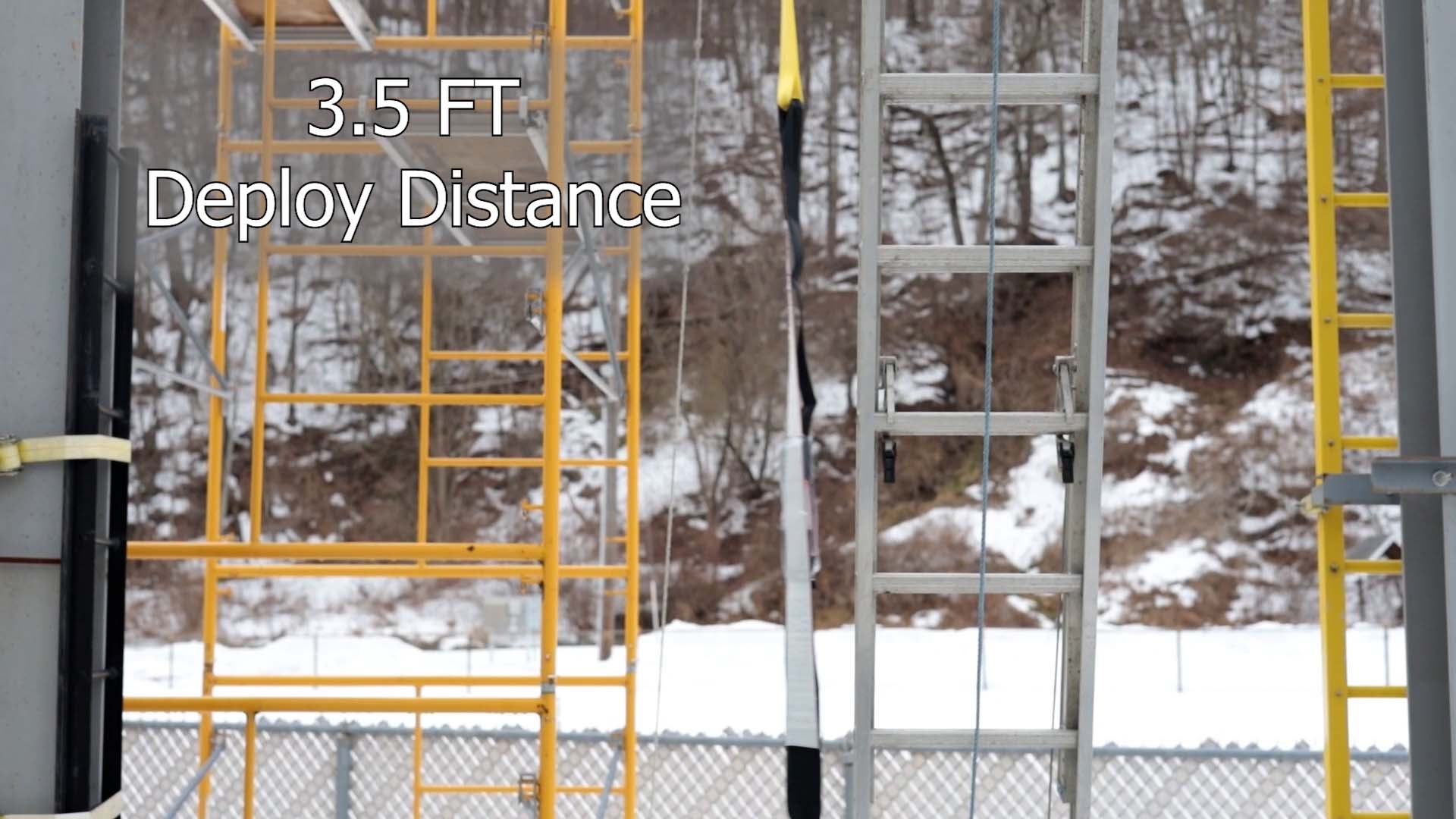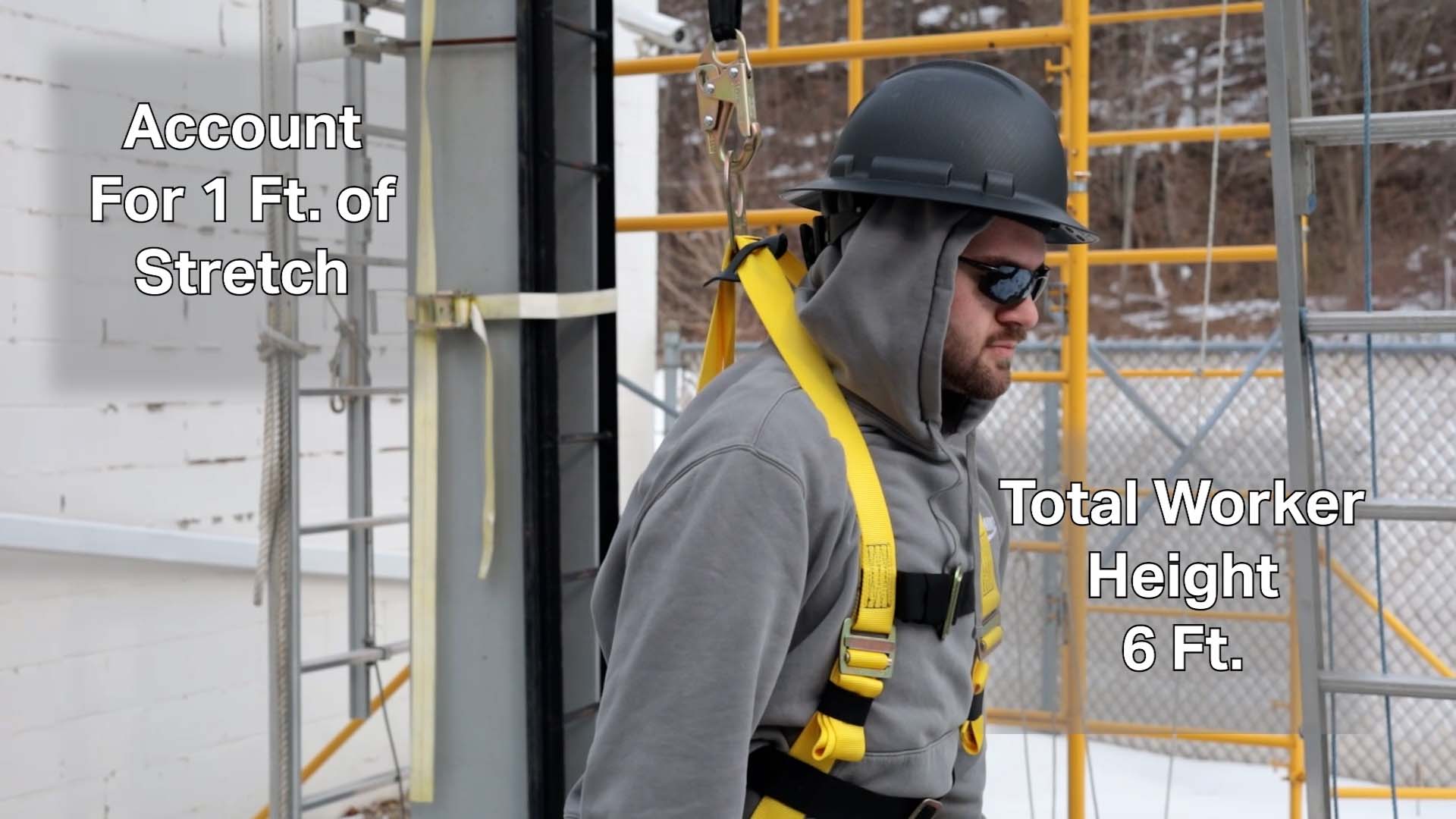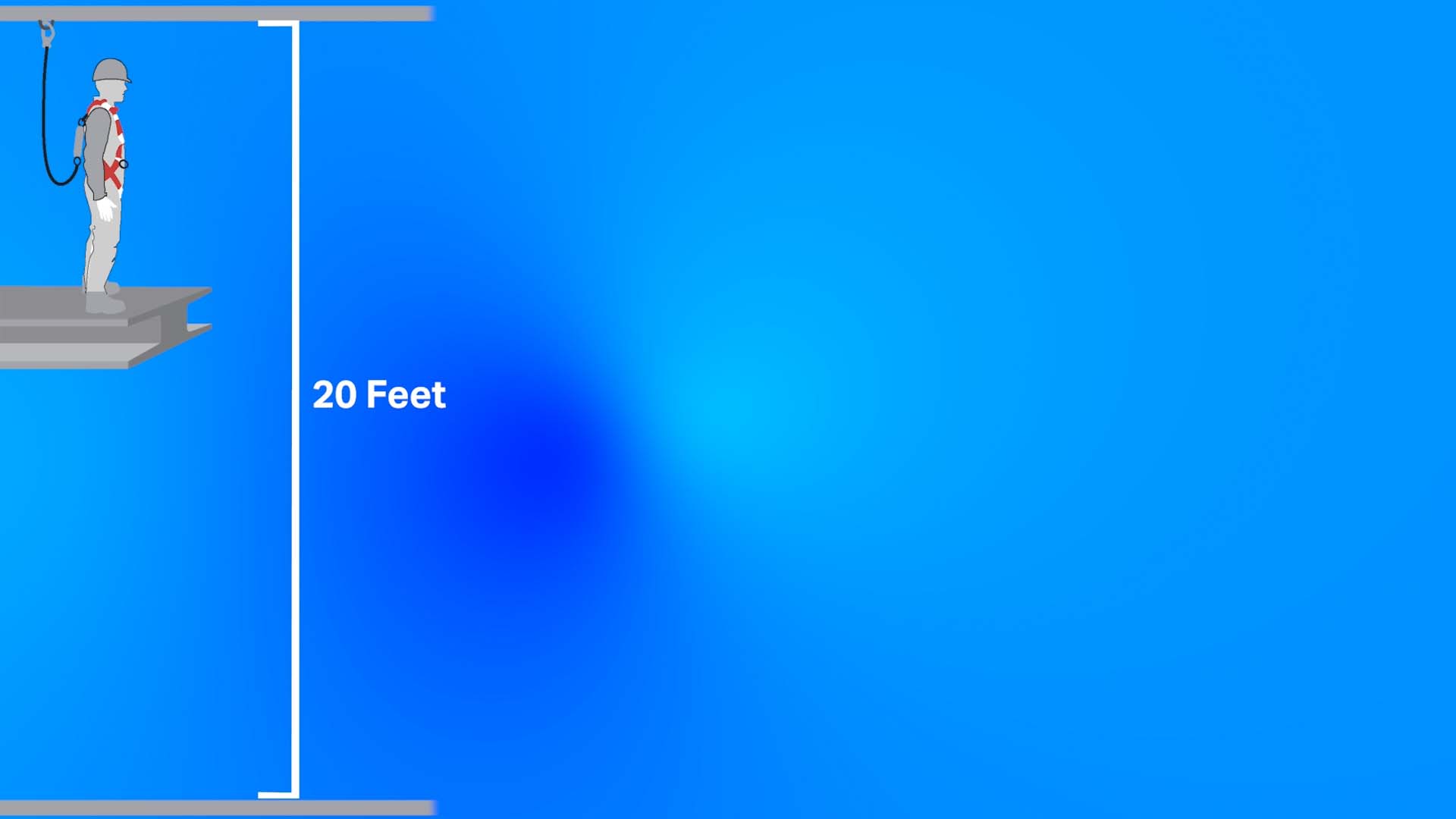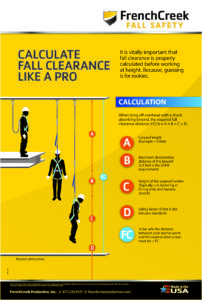Your cart is currently empty!
How To Calculate Fall Clearance Like A Pro
The Importance Of Calculating Fall Clearance
Picture this: you’re twenty-five feet in the air standing on a steel beam completely exposed to the elements. The only thing keeping you safe from taking a fall is a full-body harness and properly tied-off lanyard. Good thing you were trained correctly on your fall protection system. Surely, if you took a fall from this height your lanyard would have enough fall clearance distance to deploy, right? Right!?
One of the most overlooked and frequent mistakes when implementing a fall protection system is not properly accounting for fall clearance distance. Fall clearance is the minimum vertical distance needed to prevent contact between the worker’s feet and the lower level during a fall. Failure to do anything other than the proper fall clearance calculation can result in severe injury or worse. A miscalculation can result in a fall arrest system not having adequate time to deploy before a worker makes contact with the ground or hazards below.
What Factors Influence Our Fall Clearance Calculation?
Before calculating your fall clearance distance, you need to know what will influence the distance of a fall. Your lanyard length affects your overall fall distance in two ways, the initial length, and the deceleration distance of the lanyard. The standard length of a shock-absorbing lanyard is 6’ however, longer-length lanyards are available, and their length must be calculated correctly.
Should a fall occur a shock-absorbing lanyard’s deceleration mechanism will deploy. The most common deceleration mechanism is a shock-absorbing pack. OSHA tells us that the maximum permitted deceleration distance must be no longer than 3.5 feet or 42 inches.
The fall clearance distance won’t be the same for every worker. Don’t forget to take body height into account. If you’re a taller person, you’ll have a slightly smaller clearance distance than someone who’s not as tall. We measure worker height by measuring the distance from the worker’s back D-ring to their feet. On average this is 5 feet.
Should a fall occur your fall protection harness is going to stretch and conform to the worker’s body. We want to add another 1 foot to our calculation for harness stretch. This makes the worker’s total height 6
The ground or lower levels aren’t the only things a worker can contact during a fall. If someone has moved a vehicle, building supplies, or equipment below, the total clearance height can be significantly reduced. If these potential hazards can’t be moved, you can’t anchor to a safer location, or cannot compensate for the clearance loss, steps should be taken to ensure proper clearance is available. You may need to re-calculate your fall clearance as needed.
How To Calculate Your Fall Clearance Distance With A Shock Absorbing Lanyard
The first step to calculate your fall clearance is to measure the height from ground level to your anchor point. This is your clearance distance In this example our clearance distance is 20 feet. We know that our total fall distance must be less than 20’ to keep our workers safe.
Fall Clearance calculation can be broken into four main areas that, added together, provide a total fall distance. We’ll list them out as A, B, C, and D
- A is our lanyard length. In this example, we are using a standard 6-foot lanyard
- B is the maximum deceleration distance that the lanyard provides. OSHA requires 3.5 feet as the maximum distance, although a fall may be arrested sooner. We always want to assume the maximum to keep our workers as safe as possible.
- C accounts for the height of the suspended worker. We’ll use 6 feet as the average height of a worker. This figure accounts for 1 foot for harness stretch.
- D accounts for the safety factor. This distance is added as an extra precaution. A two-foot safety factor is typically recognized as a best practice.
With this gathered information we can now calculate our required fall clearance, represented as FC. This is done by simply adding our values for A, B, C, and D
From our example here we see that our calculated fall distance is 17.5 feet which keeps our worker safe from the lower level 20’ below.
In this example, our worker is tied off at an overhead anchorage point. Anchoring at the D-ring level rather than overhead reduces your total fall clearance. In this example, the worker would not have had sufficient fall clearance to anchor at the D-ring level.
Who should be responsible for Clearance Calculations? 
Safety is not the responsibility of one person. Anyone working at height, or with others in elevated positions must be aware of what conditions are present and ensure dangers are mitigated.
Resources
Check out our fall clearance calculation video on YouTube. Or request a fall clearance Request a Poster for your storefront, breakroom, or job site.






